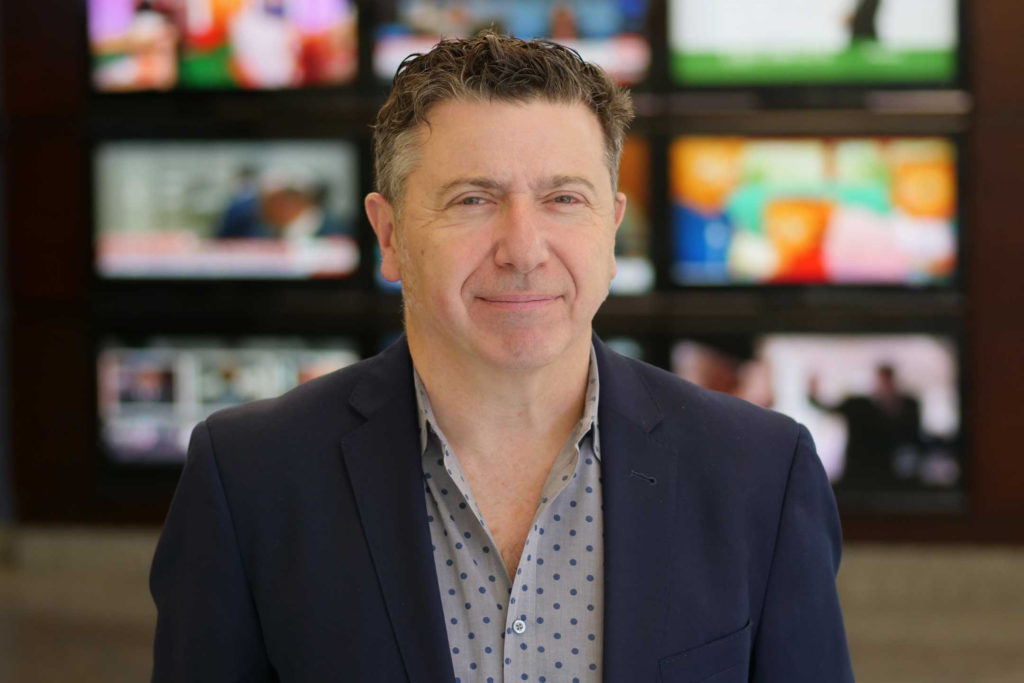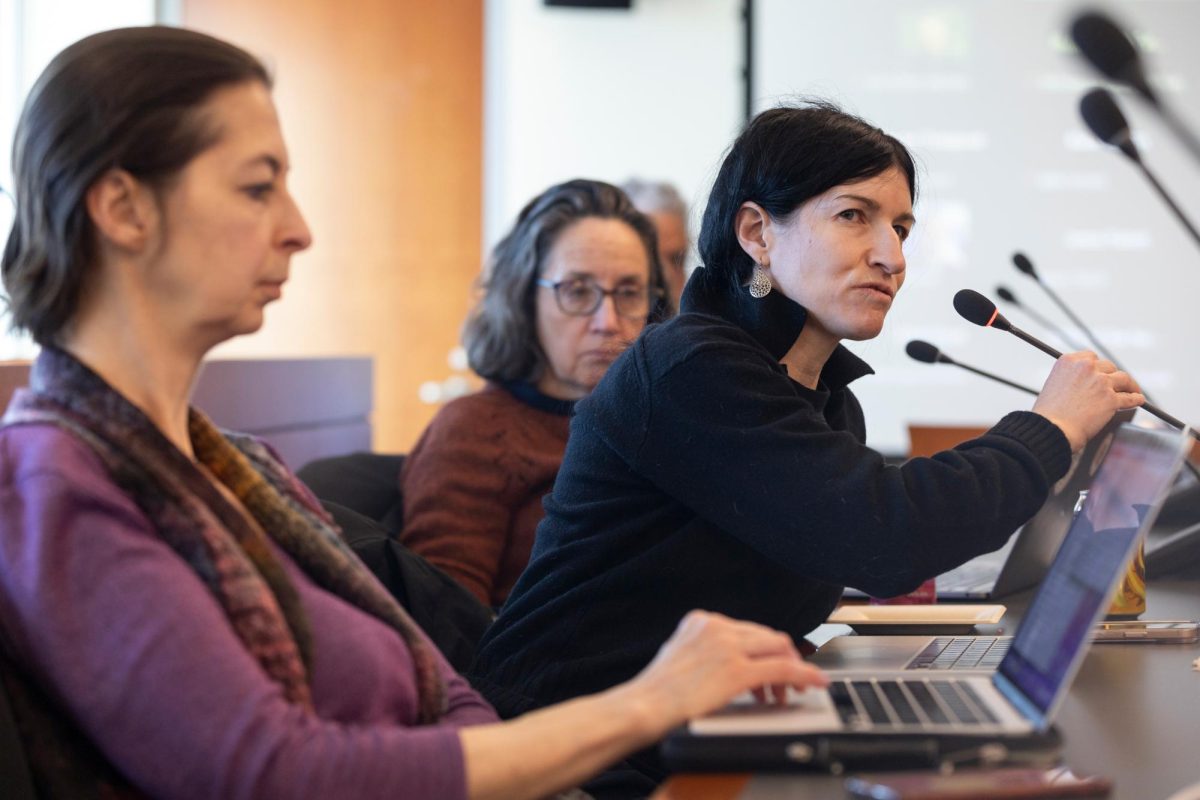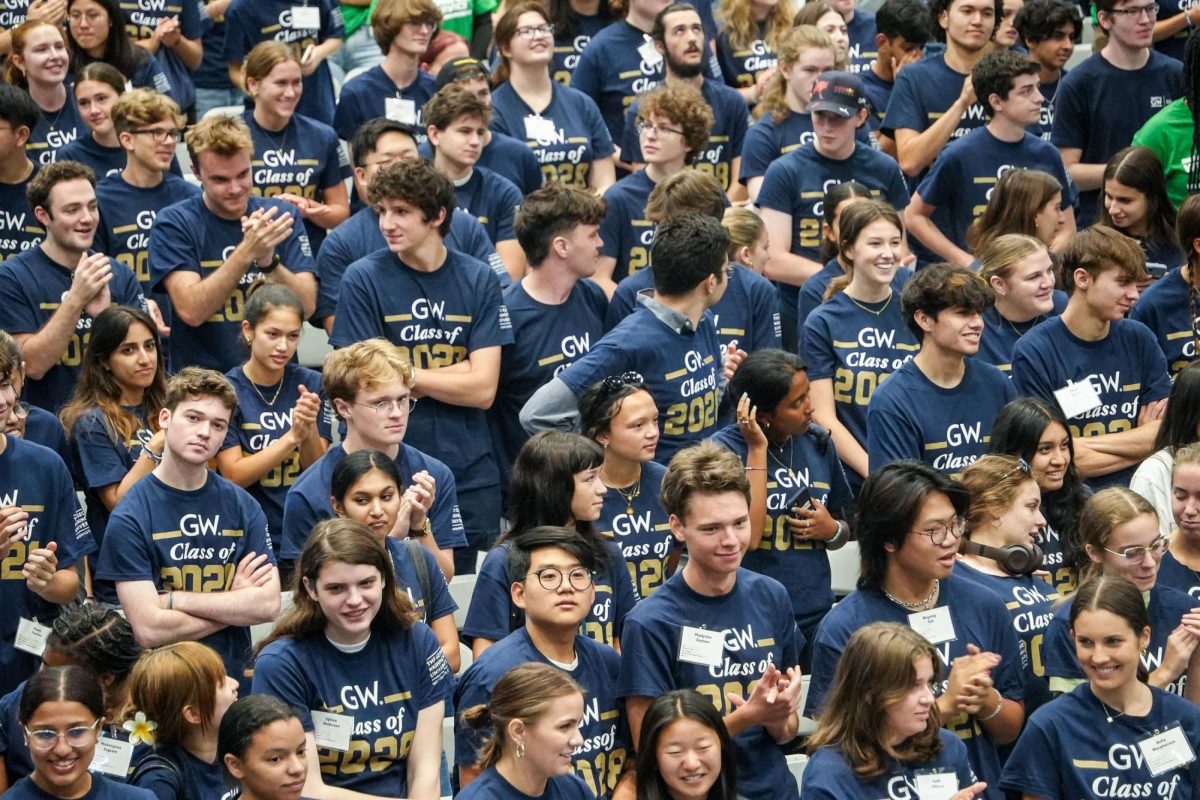As the University was gripped by the COVID-19 pandemic, Silvio Waisbord was just stepping into his role leading the School of Media and Public Affairs.
Waisbord, who previously served as SMPA’s associate director, said he initially agreed to take the position for one academic year until officials could conduct a full external search for a long-term director. But after the rise of the COVID-19 pandemic and a University-wide hiring freeze, Waisbord said he agreed to remain in the role for an additional year while GW continues to respond to the academic and communal effects of the virus.
“To me, it was a great opportunity to contribute to the school, to continue to raise the profile of the school and provide opportunities for students,” Waisbord said. “I strongly believe in everything that SMPA has done, so that’s why I wanted to do it.”
Waisbord replaced former SMPA Director Frank Sesno, who served in the role for about a decade.
In his first year, he said he prioritized maintaining relationships with students and faculty, especially in light of the pandemic. Waisbord added that he has encouraged professors to integrate diverse course materials into their curricula and hired a diverse group of faculty.
Tackling remote learning
In his first semester as director, Waisbord said the largest challenge he’s faced has been overseeing the implementation of virtual teaching methods, which included restructuring course content, readings and assignments to fit an online platform.
He said SMPA officials sent a survey to students over the summer to gather their feedback from the spring 2020 virtual semester in preparation for the “technology needs and situations” of the coming fall semester. The survey asked students about their experience with virtual classes last spring.
Waisbord added that while he understands school members may be “maxed out” during the pandemic, he asked faculty to carve out time to provide feedback about how the school could improve.
Waisbord also said he communicates with members of the National Council for Media and Public Affairs – an advisory board made up of alumni and “friends” – about ideas to improve the school’s areas like philanthropic and internship opportunities for students.
“My job is basically always inviting and encouraging people to reach out and let me know what it is that we can do – what we can do better,” he said. “That’s the way that I see myself as a manager is not something that I decided on my own. It’s informed by what I hear.”
Improving diversity
Waisbord said increasing SMPA’s faculty diversity is an “obvious” goal but how to effectively achieve that goal is more complex. He said one approach could be recruiting officials in SMPA to develop contacts with fellow schools, newsrooms and media organizations with employees who might be interested in teaching full time or part time at GW.
SMPA administrators established a student-led diversity task force in 2016 to suggest ideas to increase diversity in the school.
School officials have also hosted virtual events regarding the topic of race, like a conversation in October about the role of the media during Black Lives Matter protests last summer.
He said SMPA professors should incorporate resources like diverse readings, materials or podcasts in course syllabi to appeal to all “experiences and interests” to support students’ community engagement.
Waisbord said the feeling of belonging has always been central to him because of his background as a first-generation student and immigrant, and he understands that each student’s experience at GW will differ based on their background.
“That to me is central to the way that we make everybody – faculty, staff and particularly students – feel included in our school,” he said. “Then it’s a question of what we teach.”
He said he has found an advantage in virtual learning in that faculty can more easily bring in speakers with “different experiences and backgrounds” from around the world. He said he has pressed professors to seek guest speakers and has planned conversations with faculty about fostering diversity in the materials taught in the classroom.
“You have to be creative as an instructor in how you foster creativity, how you foster diversity of voices in the classroom – not just among students but what students are exposed to the materials,” Waisbord said.
He said he facilitated a survey at the beginning of the year regarding diversity and inclusion in SMPA to gauge students’ feedback about the issue.
“It’s always important to have formal and informal opportunities for students to express themselves, and with my colleagues, I said ‘I’m always available. If you have any ideas, please let me know,'” he said.
Engaging the SMPA community
Waisbord said he has met monthly with SMPA’s Student Advisory Board – a student group that provides feedback to SMPA officials – to hear comments and ideas that help shape students’ experiences. He said the meetings are “very important,” especially in a virtual environment, for students to provide suggestions, even as small as updating a website, on issues officials may not be aware of.
“It is good to have these opportunities for a free-flowing conversation,” Waisbord said.
He said settings like “lunchtime chats” with faculty and students and “informal conversations” every other week have helped create a community for students, especially for freshmen living on campus.
“Regardless of how many people showed up, it’s a good opportunity for people to know and symbolically sends a very powerful message that we are active, that we are here and that we want to hear from you,” Waisbord said.
He said no matter in what capacity students are back on campus in the fall, his first priority will be to “celebrate” everyone’s return. Waisbord said he will also prioritize figuring out what strategies the community used well during the pandemic and finding ways to potentially implement them for the future.
“I anticipate that we’ll have to stay creative and innovative and quick on our feet to think about how we transition back to something that probably, at least in the fall, will not be exactly what we had before the pandemic,” Waisbord said. “That’s my to-do list probably toward the end of the spring and during the summer.”








